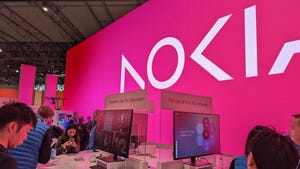Ukrainian telcos reportedly struggling to keep networks powered
Rolling power cuts caused by Russian attacks on the Ukrainian grid are making it harder for operators in the region to keep networks online.
January 17, 2023

Rolling power cuts caused by Russian attacks on the Ukrainian grid are making it harder for operators in the region to keep networks online.
Ongoing Russian strikes in the Ukrainian power grid mean an average of 25% of base stations are down at any given time, and during the worst of in November 59% of base stations weren’t functioning, according to a report in the Wall Street Journal.
Operators in the region are on the hunt for batteries which can hold more charge and therefore keep the network on for longer during blackouts, as well as generators. “We are not asking for money, we are asking for batteries,” the article quotes Yuriy Zadoya from Lifecell as saying. “No one has a stock of batteries.”
Apparently most of the base stations in Ukraine use lead-acid battery known as absorbent-glass mat or AGM which can only last a couple of hours in a blackout, so operators are trying to get hold of lithium-ion backup systems which should perform better, as well as generators which can provide their own supply.
Kyivstar, Lifecell and Vodafone Ukraine were told by manufacturers the units would take three or four months to produce, according to Stanislav Prybytko, the director for mobile communications at Ukraine’s ministry of digital transformation. “It was unexpected for us because the attack was so massive and had a big impact on the energy system,” it quotes him as saying in December.
All three operators are allowing full roaming between their networks in an attempt to keep people connected if certain base stations go out, and the operators are looking to get more priority access to the grid, he said.
A lot of the equipment in the previously Russian held areas of Ukraine was destroyed – Zadoya is further quoted as saying: “Some base stations were robbed—they simply took the equipment. Quite a few were destroyed totally.”
Last year we spoke to Volodymyr Lutchenko, CTO of Kyivstar, about the challenges of keeping communications online in a country under invasion. Speaking about the process of moving into liberates areas and trying to get comms back on line, he told us: “You’re very close to the first line of military forces, obviously there are conditions to enter the cities – It should be checked for mines and hidden Russian troops. And only after that we get permission to enter the city and to restore communication.
“The first thing we are trying to find is the less damaged sites, and with the help of a generator or Starlink, make a fast connection and provide at least a minimum level of connectivity for the local people. I can feel almost everywhere there is absence of power. That’s why I like the generators, it’s the only the solution to make the power to connect the equipment. But not only equipment, once you launch the generator in the liberated city, immediately people gather around – they need to get the electricity to charge their phones.”
You can read the full Kyivstar interview with Telecoms.com here.
Get the latest news straight to your inbox. Register for the Telecoms.com newsletter here.
About the Author
You May Also Like












_1.jpg?width=300&auto=webp&quality=80&disable=upscale)
